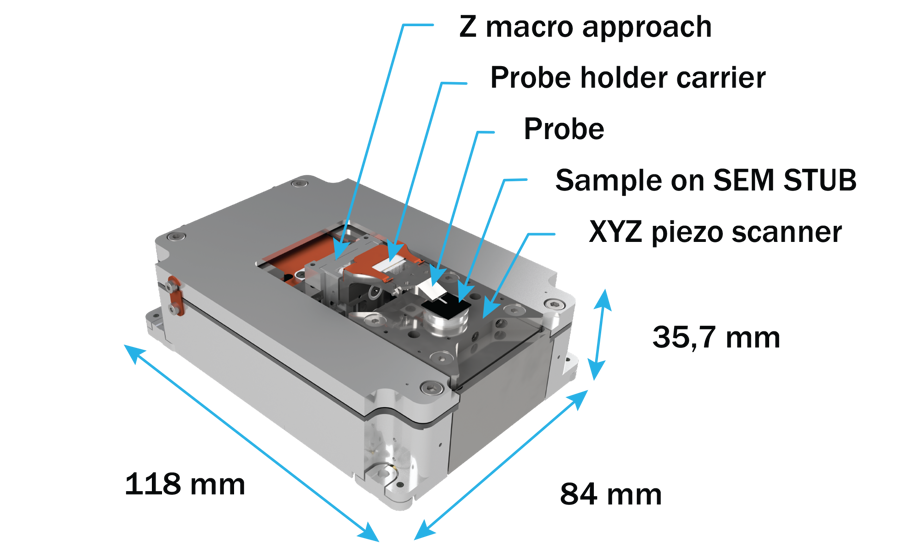NenoVision - LiteScope AFM (integrate into SEM)
NenoVision is a technology company based in Brno, Czech Republic. We were the first spin-off from the Brno University of Technology and the Central European Institute of Technology (CEITEC).
NenoVision develops, manufactures, and sells a revolutionary type of atomic force microscope (AFM) LiteScope™ designed for fast and easy integration into scanning electron microscopes (SEMs). (see NenoVision)
NenoVision LiteScope

LiteScope™
Atomic Force Microscope designed for easy integration into the Scanning Electron Microscopes. The combination of complementary AFM and SEM techniques enables you to use the advantages of both commonly used microscopy techniques.
Complex sample analysis
Unique technology of multidimensional correlative imaging enables simultaneous acquisition of data from SEM and AFM, and their seamless correlation into 3D images.
In-situ conditions
All measurements are done at the same time, in the same place and under the same conditions, preventing the need of sample transfer and risk of contamination during analyses.
Precise localization of the region of interest
Extremely precise and time saving approach using SEM to localize and navigate the AFM to the region of interest.
Correlative Microscopy
A correlative microscopy is an approach that benefits from the imaging of the same object by two different techniques.
With the ever-increasing demand for more precise imaging, the pressure on the development of new technologies in microscopy is constantly growing. The term correlative microscopy refers to a group of methods engaging multiple different imaging techniques and correlating their data, which leads to surprising results and scientific discoveries.
The correlation of images from two microscopes can be limited by the difficult localization of the region of interest or incompatibility of data acquired by different instruments under different conditions.
CPEM principle
CPEM enables simultaneous detection and acquisition of AFM and SEM signals at the same time and in the same place.
How does it work?
During scanning, the electron beam points close to the AFM tip with a constant offset. They both remain static, while the sample is moving with LiteScope´s piezo scanner. This way, data from AFM and SEM microscopes can be acquired at the same time, in the same place, and under the same conditions.
The only true correlative microscopy
CPEM enables sample analysis in a way that was difficult or impossible by the two imaging techniques separately and brings new possibilities for advanced correlative imaging in a variety of fields such as Material Science, Nanotechnology, Semiconductors, Life Sciences, and many more.

